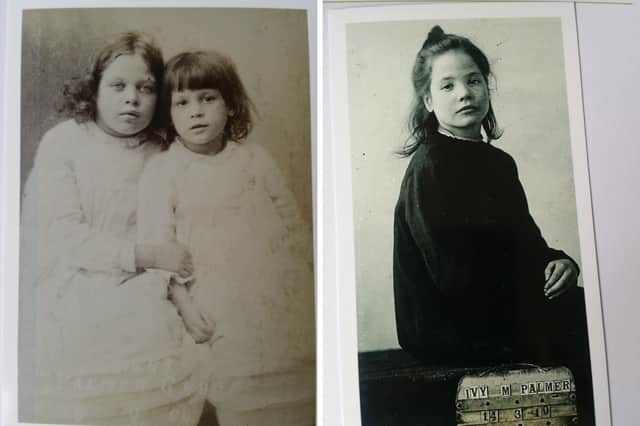British Home Child Day: Remembering 100,000 youngsters sent away from Britain to Canada
and live on Freeview channel 276
More than 100,000 British children in care were sent to work in Canada, with most never seeing their families again.
Sent overseas by organisations, such as Barnardo’s and The Salvation Army, children’s names and birth dates were changed to ensure families wouldn’t be able to find them.
Advertisement
Hide AdAdvertisement
Hide AdHome Children Canada, a non-profit charity dedicated to elevating and preserving the memory of these child migrants, states the scheme is a “significant part of the history of Canada and the United Kingdom, yet it is still vastly unknown.”
Canada remembers these lost children annually with British Child Home Day, taking place today (Thursday, September 28).


Who are the British Home Children?
Home children were British children sent to colonies to reduce labour shortages in the late 1800s and early 1900s, under the child migration scheme. As well as Canada, children were sent to countries including Australia, South Africa and New Zealand. It’s believed this scheme was not fully discontinued until the 1970s.
According to Canada’s British Home Child Day Act, home children were sent to Canada with the hopes they would have a better life. It was believed that Canadian families would welcome these children as a source of labour on their farms and in their households. However, this was not always the case and many children suffered, experiencing physical, sexual and emotional abuse.
Advertisement
Hide AdAdvertisement
Hide AdThe act states: “Many of the children were lonely and sad. Some were malnourished and others were emotionally starved. Many of the home children worked from sunrise until sunset, and children as young as eight years old were expected to milk cows and labour in the fields. Many siblings were separated and never saw each other again.”
Canadians believed these children to be orphans, but many child migrants had families in the UK who put them into care due to unfortunate circumstances, such as sickness. Some families signed legal agreements that agreed to children being sent abroad whilst some cases saw children transported without parental consent, with parents receiving a notification of their child’s emigration after they had sailed, Home Children Canada claims.
Deemed inferior by Canadian society, some home children hid their identities. Research shows over 10% of the current Canadian population are descendants of these migrants, but many are unaware of their heritage.
“In desperation, she was handing over her two youngest girls to never see them again”
George Palmer, 71, experienced the recent revelation that his great aunts were home children, sent from Portsmouth to Canada in the 1900s. After her husband died in 1903, George’s great-grandmother fell into hard times - and lost 'outdoor relief' which was helping pay her rent. As she was ordered to leave her home, she approached Barnardo’s to put some of her children into care. Two daughters were initially sent to Canada the following year and, eventually, a third daughter was put into care in 1910 or 1911 and shipped out to Canada in 1912. Although they were able to communicate via Barnardo’s, George’s relatives never returned to the UK.
Advertisement
Hide AdAdvertisement
Hide Ad“My great grandmother had to sign an agreement that would allow them to send the children anywhere in the country or abroad," he said. "Given that the first two were sent out within a year, their fate was already decided. I can only think of what she was going through, when in desperation she was handing over her two youngest girls to never see them again and later the third.”
All three of George’s relatives settled overseas and got married. They were able to communicate between each other via Barnardos and were eventually able to contact some siblings in the UK, but never returned. Florence had children whose descendants reside in the US.
Tonight the Spinnaker Tower in Portsmouth will be lit up in memory of the Home Children.
“An ugly stain on our country”
In 2010, PM Gordon Brown apologised for the “misguided child migrant schemes” whilst announcing a compensation fund of £6 million for the individuals and relatives impacted. Child migrant apology, saying: “It’s harder still to grasp that these terrible events happened, not in the opening chapters of our history, but in the living memories of most of us here today. This cruel and unnatural practice was not so much transportation, but deportation.”
Advertisement
Hide AdAdvertisement
Hide AdCanada’s government has been slow to formally apologise, with Jason Kenny, Minister of Immigration, Refugees and Citizenship, claiming the lack of official apology was due to a “limited public interest” in 2009.
Despite this, Canada announced 2010 the “Year of the British Home Child” and remember the children affected annually on British Home Child Day.
National World spoke to Home Children Canada, which said British Home Child Day “holds a profound significance in recognizing the remarkable contributions made by British Home Children to Canada and other countries they called home. This day serves as a poignant reminder of the challenges they faced, their sacrifices, and the enduring legacy they left behind.”“Over the years, these British Home Children have become an integral part of our shared history and heritage, leaving an indelible mark on the cultural fabric of our nation. Their contributions in various fields, including agriculture, industry, and public service, have enriched the very essence of Canada. We are immensely proud of their accomplishments and their role in shaping the diverse and inclusive society we cherish today.”
More information can be found on Home Children Canada’s website: https://www.britishhomechildren.com
Comment Guidelines
National World encourages reader discussion on our stories. User feedback, insights and back-and-forth exchanges add a rich layer of context to reporting. Please review our Community Guidelines before commenting.